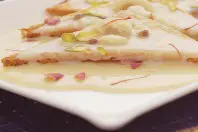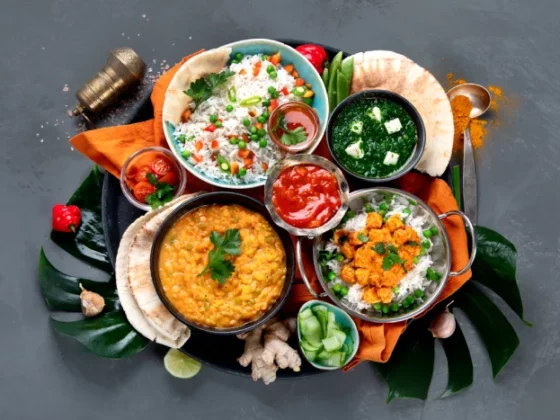The Royal Cuisine of India: A Culinary Legacy
India, a land of kings and emperors, has a deep-rooted tradition of hospitality. The age-old dictum “Atithi Devo Bhava” defines Indian culture, where guests are treated with utmost respect. State banquets, filled with lavish feasts, serve as a testament to this tradition. In the past, gold varq adorned biryanis, and gold guineas were boiled with dal to enhance flavor. Even today, weddings feature grand feasts to ensure that every guest leaves satisfied. Though the era of kings and maharajas has passed, their culinary heritage remains an important part of Indian history.
The Lost Recipes of Royalty
Unfortunately, much of the documentation on ancient royal food habits is scarce. Emperor Ashoka adhered to a simple Buddhist vegetarian diet, while the arrival of the Mughals introduced a new culinary tapestry. Their influence merged with regional cuisines, creating unique flavors that continue to define Indian royal cuisine today.
The kings, maharajas, and nizams were connoisseurs of fine dining. Their palaces housed grand kitchens staffed with the best cooks, each specializing in different dishes. These chefs competed to create the most exquisite meals, using the finest ingredients. Some recipes, however, remained closely guarded family secrets and have been lost over time.
Experiencing Royal Cuisine Today
Today, the best way to savor royal Indian cuisine is at heritage hotels managed by state tourism departments. Although five-star hotels in metropolitan cities attempt to replicate these flavors, the experience often falls short. Changes in farming methods, ingredient quality, and the lack of skilled chefs have made it difficult to revive the authenticity of royal dishes. While these hotels offer glimpses of royal cuisine, they cannot fully recreate the grandeur of the past.
Diverse Royal Cuisines of India
India does not have a singular royal cuisine. Each region boasts its own culinary traditions influenced by historical rulers. Here are some of the most renowned royal cuisines of India:
Royal Kashmiri Cuisine: The Opulence of Wazwan
Kashmir’s traditional cuisine, Wazwan, dates back to the late 14th century when Mongol ruler Timur invaded India. Skilled cooks from Samarkand migrated to the Kashmir Valley, giving birth to the Wazwan tradition. Their descendants, known as Wazas, became the master chefs of Kashmir. Influenced by Iranian, Afghan, and Central Asian culinary styles, Wazwan is the epitome of Kashmiri banquets. This grand feast consists of 36 courses, including Tabakh Maas, Rogan Josh, Rista, Aab Gosht, Dhaniwal Korma, and Gushtaba. Phirni and Kahwa conclude this extravagant meal, rich in both taste and texture.
Royal Rajasthani Cuisine: A Legacy of Grandeur
The royal kitchens of Rajasthan thrived with skilled cooks, known as maharajs or purohits, who prepared meals for the rulers. These recipes were closely guarded and passed down through generations. Many were lost due to the lack of written records. The royal chefs took pride in their craft, often experimenting with new dishes to impress the royal court.
Rajasthan’s cuisine featured gold and silver-plated utensils, elaborate dining setups, and an array of meat dishes fit for kings. One such specialty is Junglee Maas, created by the Maharaja of Salwar. Originally prepared with game meat, salt, ghee, and red chilies in hunting camps, it is now made with lamb or poultry. The famous Dal Bati Churma remains a staple of Rajasthani cuisine, along with dishes like Banjari Gosht, Dahi Keema Samosa, Machli Jaisamandi, and Padampuri Murgh. Vegetarians relish Shahi Gatte Ki Sabzi and Ker-Sangri. Due to water scarcity, Rajasthanis rely on milk, buttermilk, and ghee in their cooking. Despite the cuisine’s spicy nature, desserts like Lapsi, Ghevar, Mawa Misri, Moong Dal Halwa, and Suji Laddoo offer a perfect balance.
Royal Awadhi Cuisine: The Art of Slow Cooking
Lucknow, known for its culture and refinement, is the heart of Awadhi cuisine. Influenced by Mughal culinary techniques, Awadhi cuisine features the famous dum (slow-cooking) method. The royal kitchens of Awadh were home to skilled bawarchis and rakabdars, who perfected dishes like kebabs, kormas, biryanis, nalli, kulchas, and zarda. Richly spiced mutton and paneer dishes, infused with cardamom and saffron, were served on ceremonial dining spreads called dastarkhwans.
Lucknow has become synonymous with its kebabs, especially the legendary Tunde Ke Kebab, crafted by a one-armed chef. The masala used in these kebabs remains a well-kept family secret, prepared exclusively by women of the household.
Royal Kolhapuri Cuisine: A Fiery Culinary Experience
Kolhapuri cuisine is one of Maharashtra’s most distinctive culinary traditions. Kolhapuris take immense pride in their food, whether it’s Mutton Kolhapuri, Chicken Kolhapuri, or Vegetable Kolhapuri. Though Kolhapuri food is known for its fiery spice levels, its flavors are exceptionally rich and well-balanced.
An integral part of Kolhapuri cuisine is the accompaniment of Rassas, flavorful thin gravies. These include Tambada Rassa (red gravy) and Pandhra Rassa (white gravy), which elevate the taste of the main dishes. While Kolhapuris enjoy pulses, vegetables, bhakris, and rice, mutton remains their most cherished ingredient.
Royal Hyderabadi Cuisine: The Nizami Feast
Hyderabadi cuisine is one of the finest royal cuisines in India. Originating from the kitchens of the Nizams, it combines Mughlai and Andhra flavors. Hyderabadis have a long-standing reputation for their love of food, which dates back to the first Nizam, Asaf Jah I. He even had a kulcha (bread) embroidered on the Hyderabad State flag.
While Hyderabadi cuisine is famous for its non-vegetarian dishes like Nihari with Naan and Haleem, its vegetarian fare is equally diverse. The city’s pickles and chutneys, such as Mirchi ka Salan, add a distinctive flavor to meals. Dal preparations in Hyderabad are varied, each offering a unique taste. Legend has it that Maharaja Sir Kishen Pershad, a royal known for his culinary passion, could cook dal in 52 different ways.
Preserving India’s Royal Culinary Heritage
India’s royal cuisine is a testament to its rich history, blending flavors from different cultures and regions. While modern adaptations strive to keep these traditions alive, the true essence of royal feasting remains a rare experience. Heritage hotels and select culinary establishments continue to serve these legendary dishes, ensuring that the legacy of India’s royal kitchens is never forgotten.







